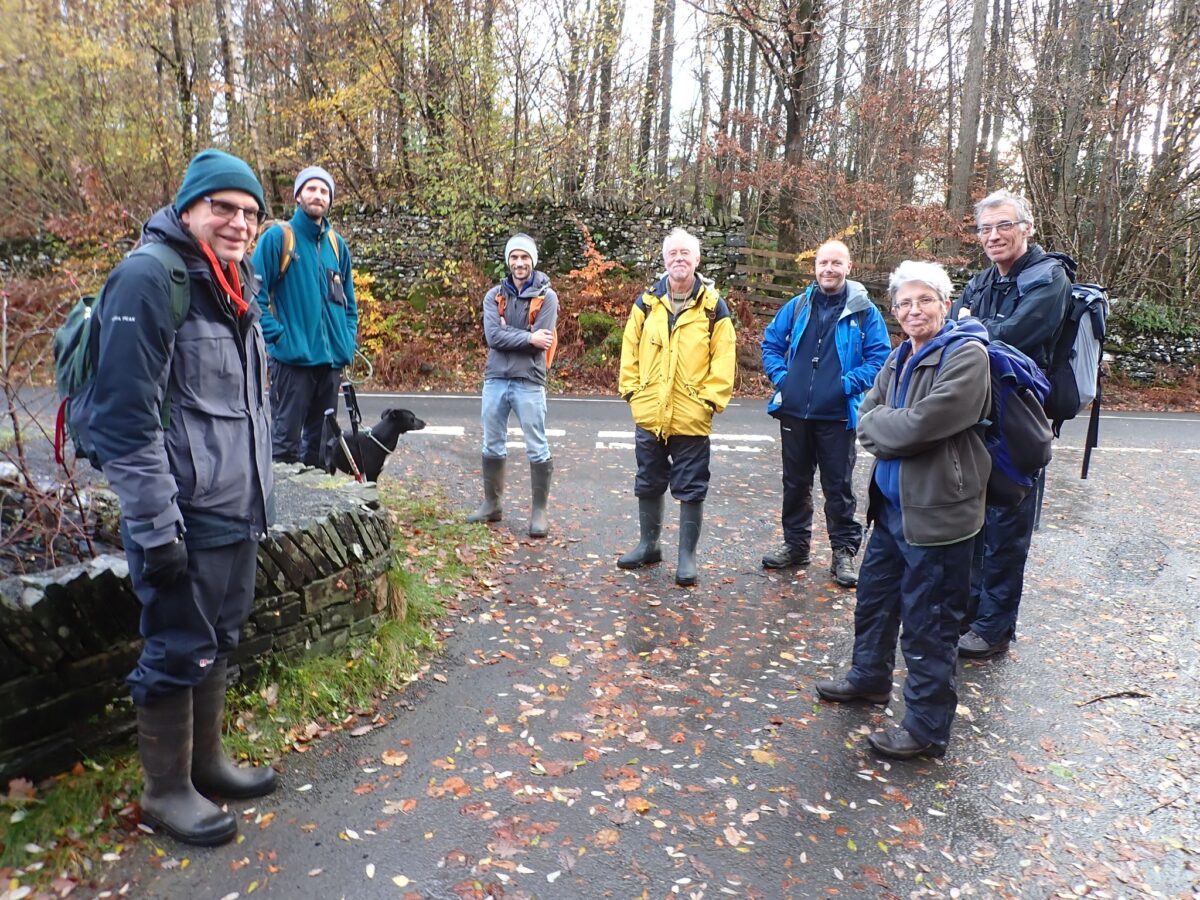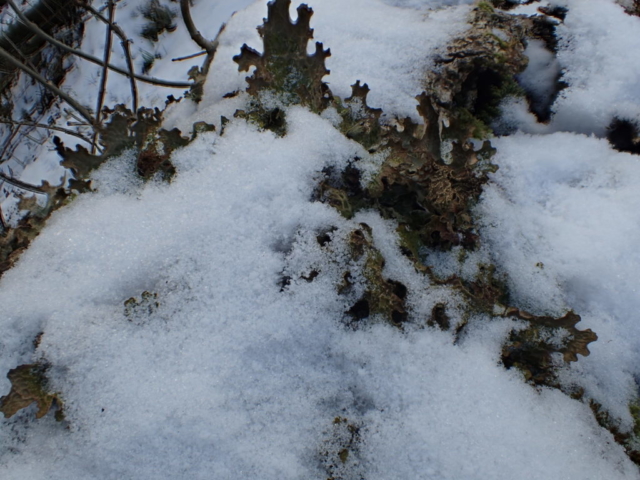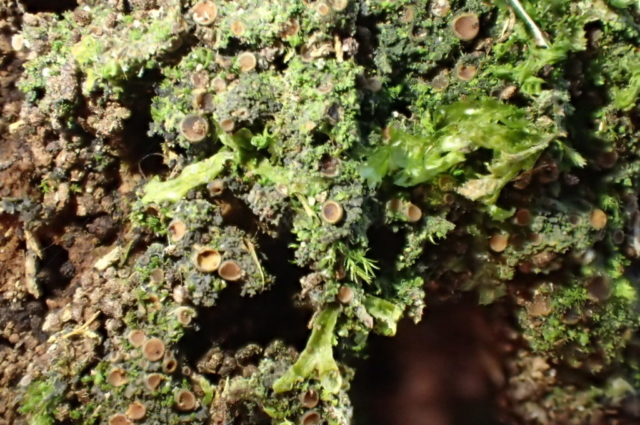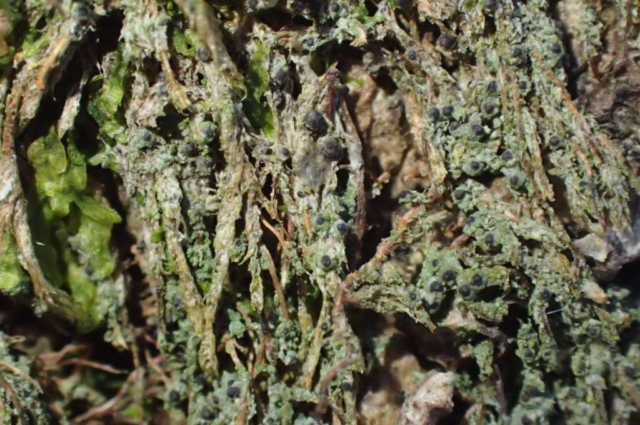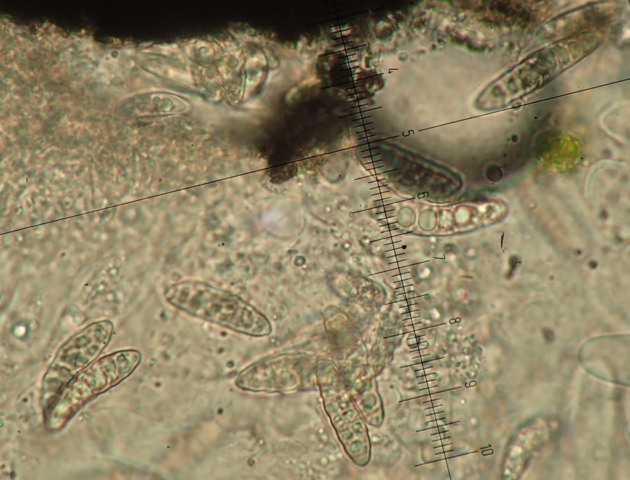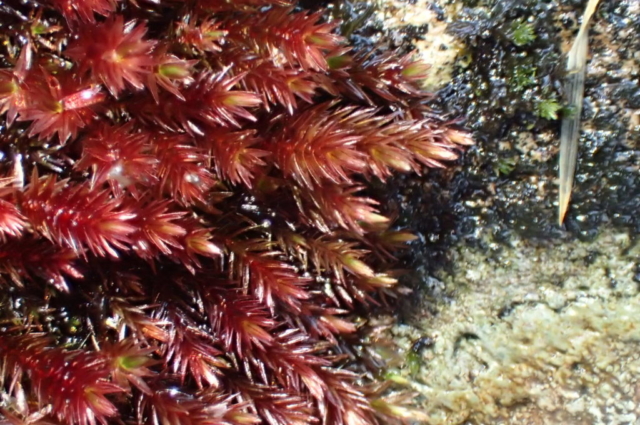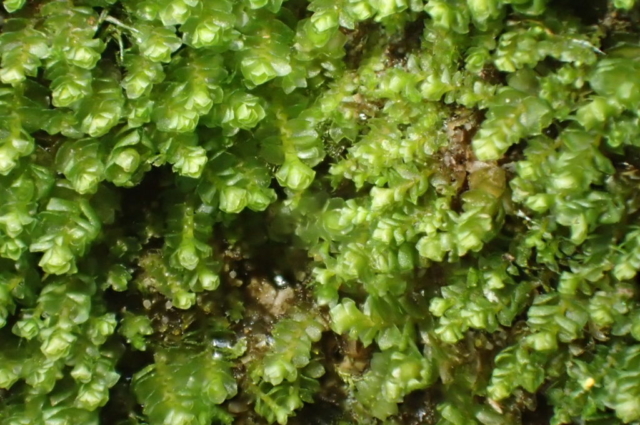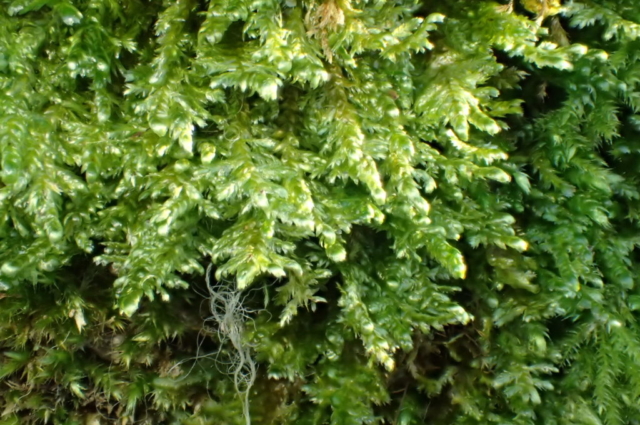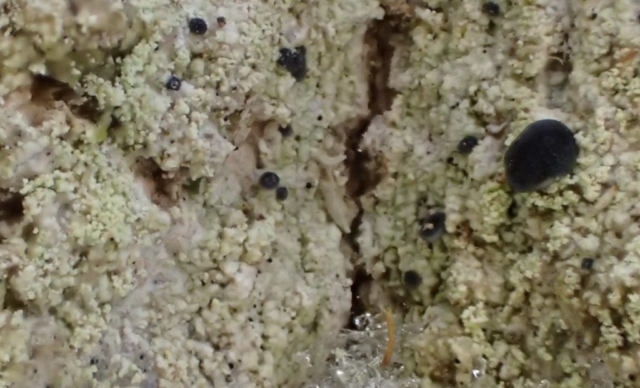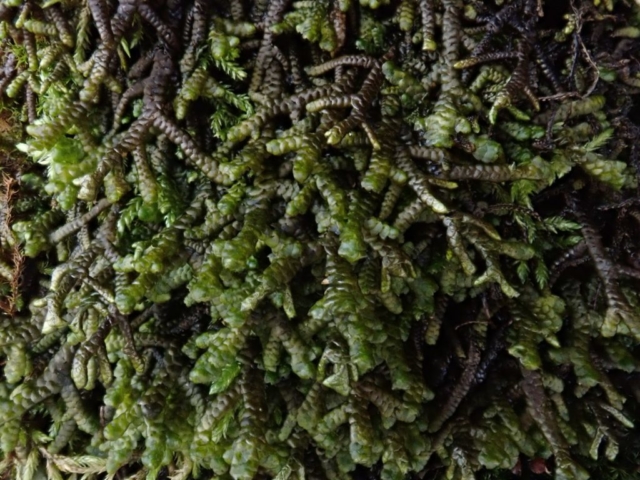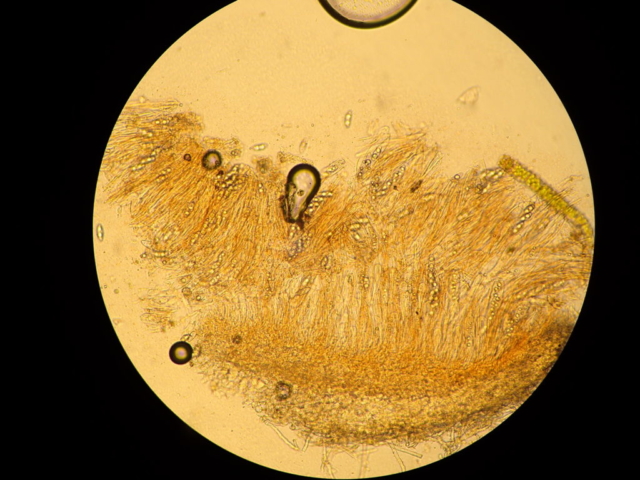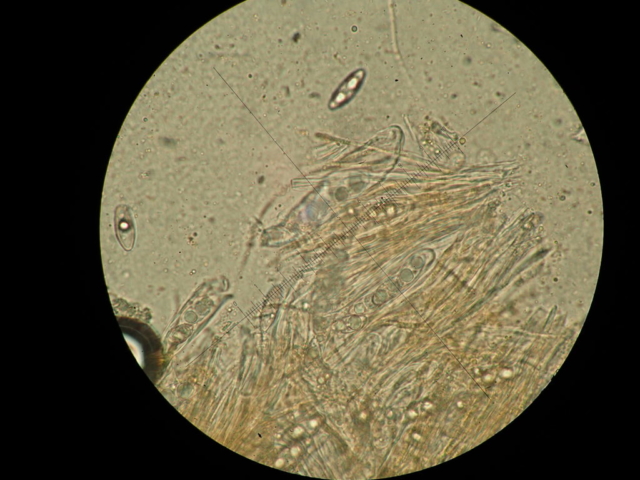This trip came close to being cancelled when Storm Debi deposited more than 100mm of rain over the 2 preceding days together with gale force winds, but licheneers (and bryologists) are hardy breeds, and we went ahead, given a forecast offering nothing worse than heavy showers. The roads were passable with care, and we had good turnouts for both the lichen and bryophyte wings.
We started with a gentle stroll up the road from Brown Howe car park, admiring the extremely well hydrated state of everything, but particularly the lichens. The first stop was at a roadside rock, liberally crusted with lichens, including a nice patch of Baeomyces rufus.

And plenty of Cladonias of which portentosa is usually identifiable…

Unlike some others…

We didn’t have to go much further to see the star of the show, a veteran Ash with a good population of Pannaria conoplea, a scarce lichen in Cumbria and one of the Lobarion group of Atlantic rainforest species.

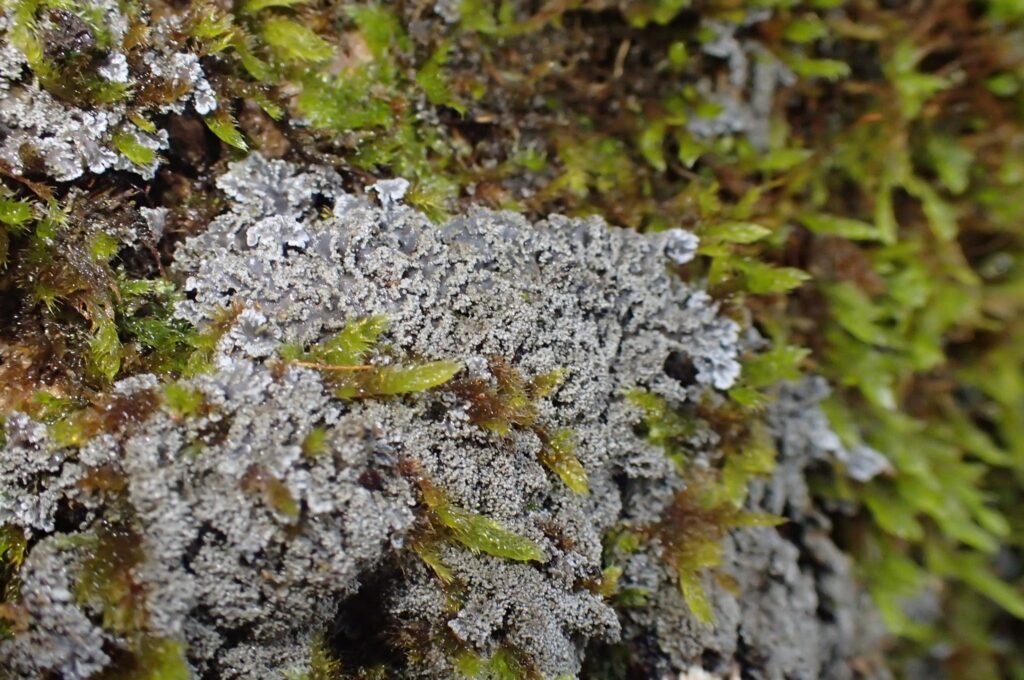
It was a pleasant surprise to find it on several nearby willow trees as well since the ash is unlikely to survive much longer even if it escapes the dreaded dieback.
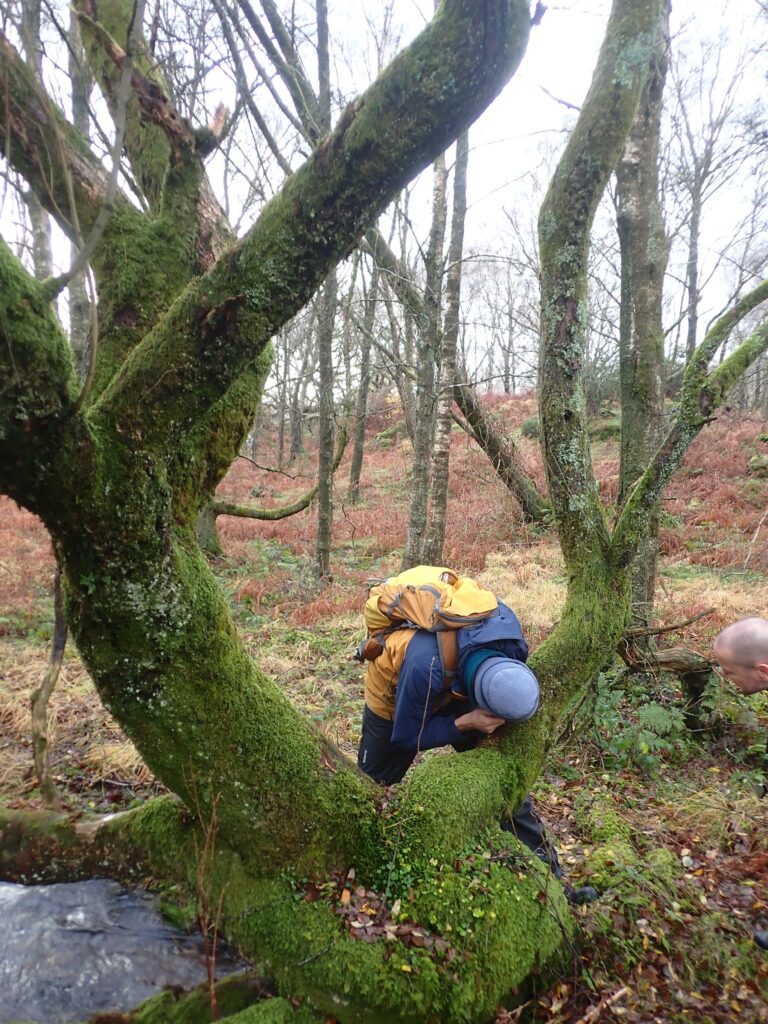
All the common tree lichens were well represented including a nice Usnea cornuta.
Saxicolous lichens perhaps less so due to most of the rocks being well covered with other vegetation.
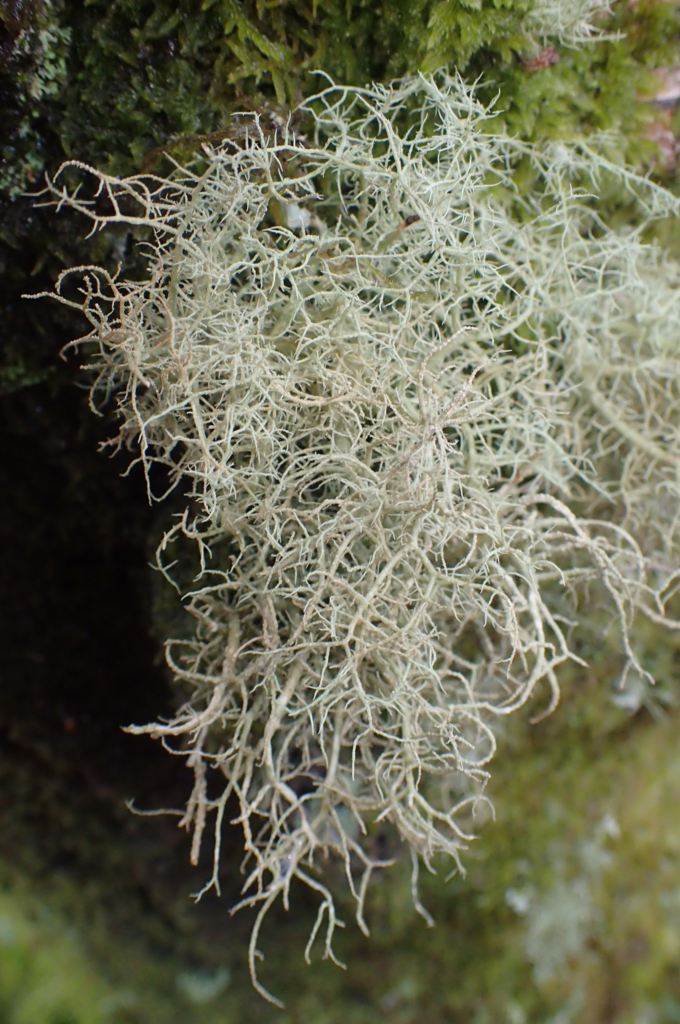
But this Cladonia was just showing off!
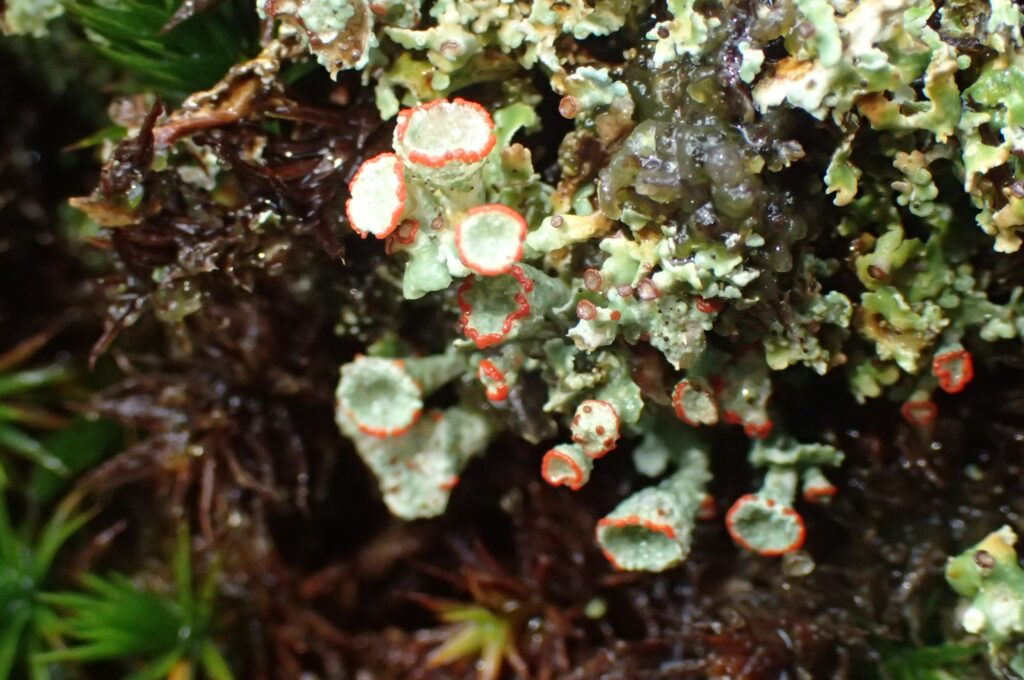
Pete tried to recruit Tip as a lichen sniffer dog but he wasn’t impressed 🙂
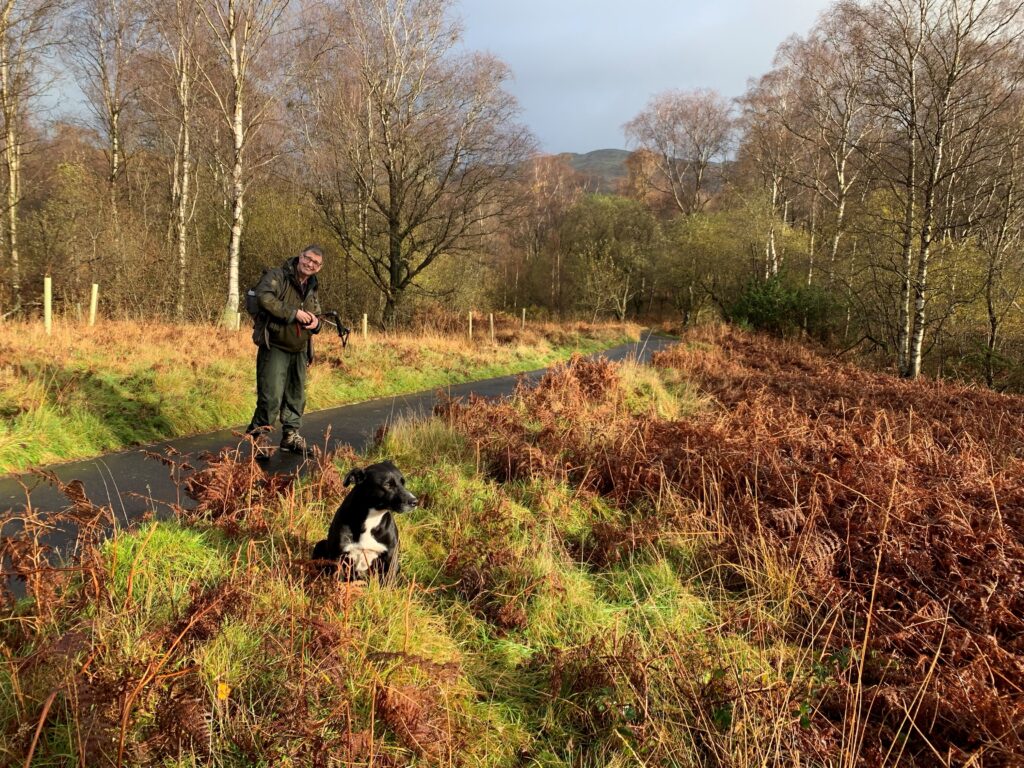
Text: John Adams. Photos: John Adams, Pete Martin, Chris Cant.
Chris adds:
In the afternoon, we continued slowly further into woods where there were some more exposed rocky outcrops. Lichens found included Stereocaulon vesuvianum, Psilolechia lucida, Phaeographis smithii, Candelaria concolor and Fuscidea lightfootii.



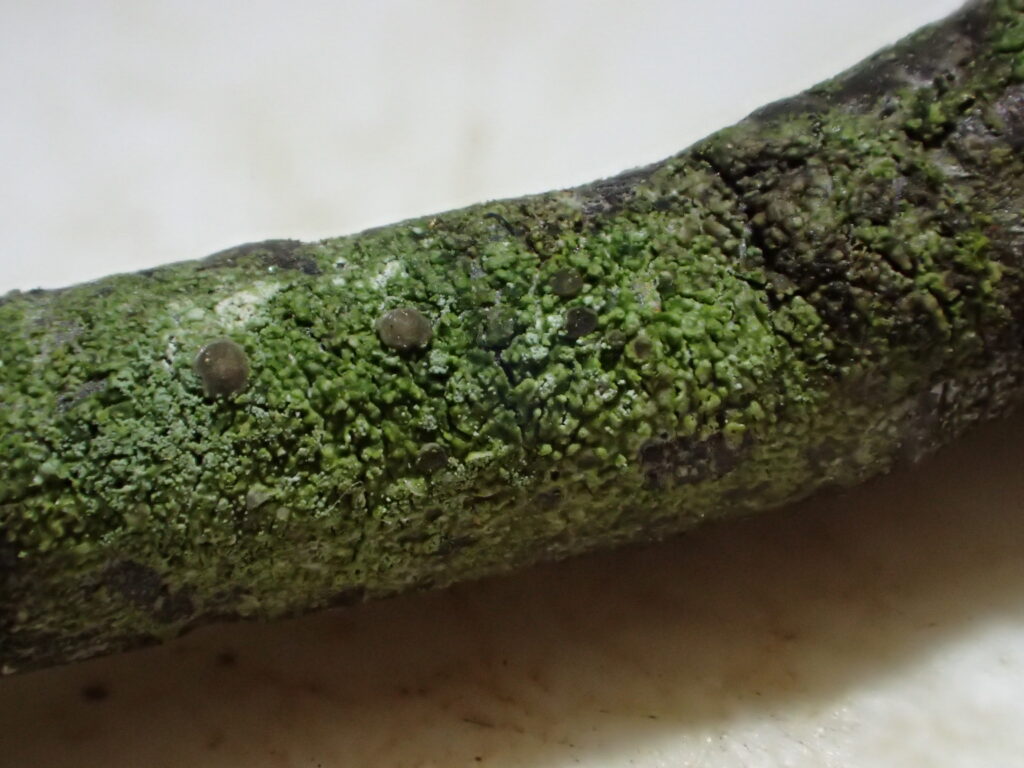
As the light faded, Peter found an interesting lichen on rock with small black lecideine fruit. Back at base, we thought that it could be Porpidia flavocruenta. Although some characteristics were right, others were not, such as apothecia and hymenium too small and the exciple did not turn red in K. A tricky genus.


It was great to find the Pannaria conoplea and see that it was spreading from ash onto willows nearby. However there no other species from the Lobarion community present. That said, there was very little Xanthoria parietina, which was a good sign.
Next time, hopefully we can get further out onto the common.
